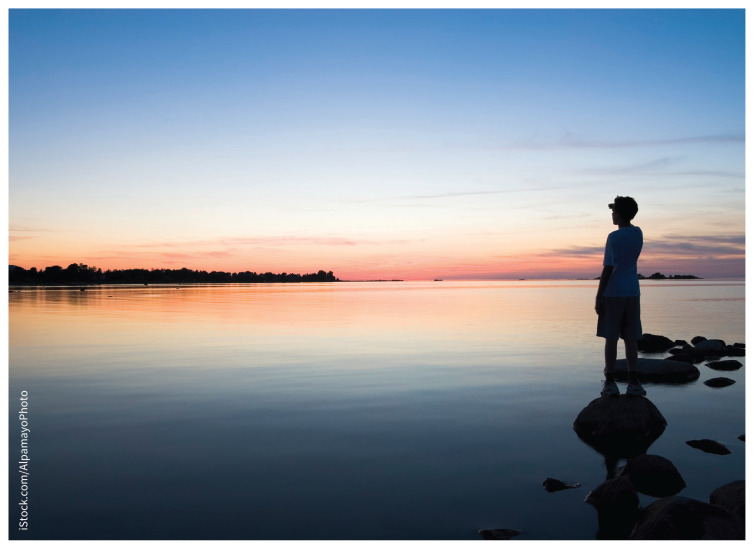The camping area is near a stand of tall birch along the shores of the McKenzie River in the Northwest Territories. Dene land-based arts educator Melaw Nakehk’o has set up her canvas tent right next to her mom and dad’s wooden framed tent. In front is a common area where they cook over an open fire. By the cooking area, Nakehk’o has cleared a workspace where she will skin her hides: five caribou and three moose. Her mom and children will help.
Like many Indigenous peoples across the country, Nakehk’o has drawn on cultural strengths to weather the coronavirus disease 2019 (COVID-19) pandemic. Communities are finding ways to take care of each other, despite limited infrastructure for pandemic response in some places. Some Indigenous Canadians are staying connected using technology. Others have returned to the land as their ancestors did during plague outbreaks in the 1800s.
“We were told to go out to the land, stay away from town, and camp in family groups,” Nakehk’o explains.
Returning to the land
Feeling cooped up after the cancellation of her moose-hide tanning workshops, Nakehk’o set up a semi-permanent camp with her family about an hour’s drive from Yellowknife. “I’ve always wanted to have more time to be on the land with my kids before they got too much older. But there’s always timing, school, work projects — all these reasons to not be out in the bush,” she says.
When her family is out exploring, Nakehk’o can see others camped out along the river. It gives her comfort, knowing she is not alone.
In northern Ontario, musician Adrian Sutherland headed into the bush as Canadian cases of COVID-19 began to rise. Hailing from Attawapiskat First Nation, between the Attawapiskat River and James Bay, Sutherland is usually out on the land in the spring. But this year, he brought along his wife, children and grandchildren. Many people in his community did the same, planning to stay out for months instead of weeks.
Indigenous Canadians have drawn on cultural strengths to weather the pandemic.
Image courtesy of iStock.com/AlpamayoPhoto
Sutherland’s family has four camps, and a big prospector tent for extra supplies — enough room for his entire family, including his brothers and their families, and his aunt and uncle and their grandchildren. They brought enough dry goods to last a few months, but their protein will come from this year’s harvest of geese, waterfowl, fish and caribou.
“This is a very unique situation with COVID-19,” says Sutherland. “It’s sort of forcing some families to reconnect and go back to the way it used to be.” His experiences on the land have helped him to overcome fear and build courage in adversity, he adds. “No matter what’s in front of you, you find a way to go around it, to get through it. It’s always guided me.”
Help to stay home
In Whitesand First Nation, health coordinator Angela Nodin is doing her best to support members of her community who are self-isolating, including those who live off-reserve.
Nodin sent her children into the bush with her parents when she feared she had come into close contact with COVID-19 as a front-line worker. After that scare, the band council issued a notice to end social gatherings. Nodin took her van and blocked off the road to the community and recorded a message urging members to stay home.
But Nodin felt she couldn’t ask people to self-isolate, on or off the reserve, without also offering supports like food hampers and cleaning supplies. The band bought a cow and a pig to help see the community through. Nodin sent hunters to the land to catch moose, fishermen to Lake Nipigon, and medicine pickers to gather cedar, Labrador tea and other traditional medicines. “We’ve been able to send three shipments of fresh lake trout and whitefish to our members in Thunder Bay,” Nodin says.
The band has also offered incentives for children to stay home, including by distributing craft supplies and hosting an online puppet show competition. Nodin reminds people to use 24-hour helplines and online supports and has talked with people about their concerns, sometimes until the early hours of the morning.
New use for traditional arts
Across Canada, makers of traditional regalia and crafts have turned their skills to making thousands of non-medical masks featuring Indigenous designs.
When schools shut down in Timmins, artist Donna “Dolores” Gull received a letter listing ways to curb the spread of COVID-19, including by wearing a mask. “I didn’t have a mask,” Gull says. Searching the Web for sewing patterns, she came across the image of a 600-year-old plague doctor mask with a long beak.
“As doctors walked through town with dead bodies, they stuffed the beak [with herbs and spices] so they wouldn’t have to smell death,” which they thought caused illness, Gull explains. She was reminded of Cree ceremonial masks and created her own beaked face coverings stuffed with cedar and sage.
Gull has since made more than 60 masks for her community with the help of her daughter.
As the weather warmed, dancers across North America were excited to hit the pow wow trail, but lockdown measures have made that impossible. A young jingle dress dancer from the Navajo Nation in Arizona shared a dance on social media as an offer of prayer and healing. The video inspired others to post videos of themselves in traditional regalia.
Anishinaabe comedian Ryan McMahon saw an opportunity to revive an old comedic character, Clarence Two Toes, in a series of online videos touching on the current crisis. “Comedy and storytelling are doorways into perspectives and ideas that you may not have had,” McMahon says. “Under COVID lockdown, we need to imagine and consider what is possible, and that’s what I’m trying to do through humour online.”
Footnotes
Posted on cmajnews.com on June 18, 2020



